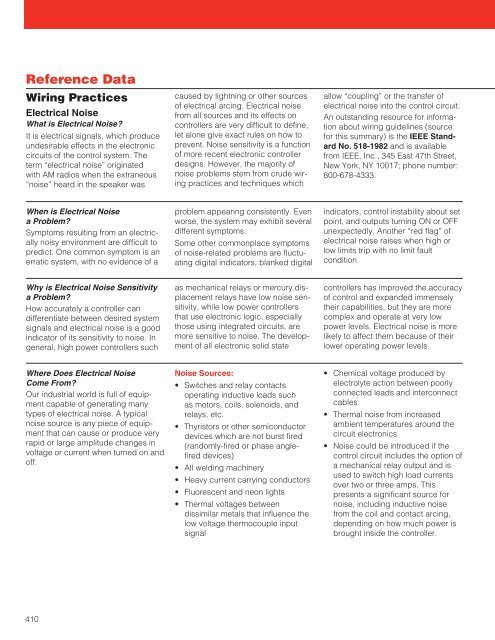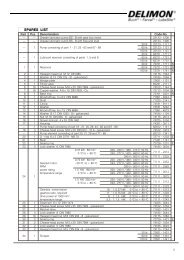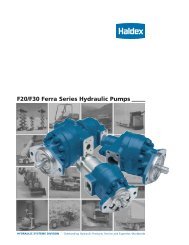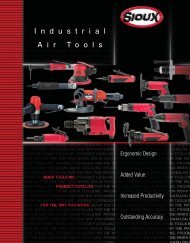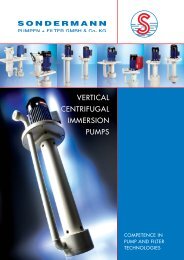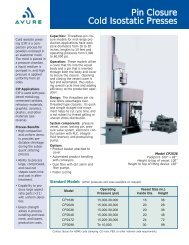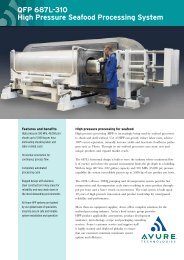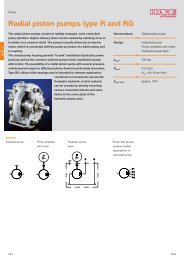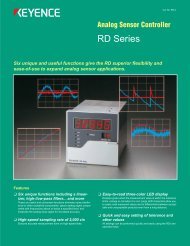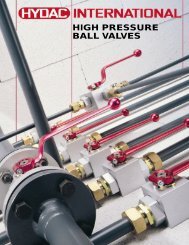Barrel Heaters - Hasmak.com.tr
Barrel Heaters - Hasmak.com.tr
Barrel Heaters - Hasmak.com.tr
- No tags were found...
Create successful ePaper yourself
Turn your PDF publications into a flip-book with our unique Google optimized e-Paper software.
Reference DataWiring PracticesElec<strong>tr</strong>ical NoiseWhat is Elec<strong>tr</strong>ical Noise?It is elec<strong>tr</strong>ical signals, which produceundesirable effects in the elec<strong>tr</strong>oniccircuits of the con<strong>tr</strong>ol system. Theterm “elec<strong>tr</strong>ical noise” originatedwith AM radios when the ex<strong>tr</strong>aneous“noise” heard in the speaker wascaused by lightning or other sourcesof elec<strong>tr</strong>ical arcing. Elec<strong>tr</strong>ical noisefrom all sources and its effects oncon<strong>tr</strong>ollers are very difficult to define,let alone give exact rules on how toprevent. Noise sensitivity is a functionof more recent elec<strong>tr</strong>onic con<strong>tr</strong>ollerdesigns. However, the majority ofnoise problems stem from crude wiringpractices and techniques whichallow “coupling” or the <strong>tr</strong>ansfer ofelec<strong>tr</strong>ical noise into the con<strong>tr</strong>ol circuit.An outstanding resource for informationabout wiring guidelines (sourcefor this summary) is the IEEE StandardNo. 518-1982 and is availablefrom IEEE, Inc., 345 East 47th S<strong>tr</strong>eet,New York, NY 10017; phone number:800-678-4333.When is Elec<strong>tr</strong>ical Noisea Problem?Symptoms resulting from an elec<strong>tr</strong>icallynoisy environment are difficult topredict. One <s<strong>tr</strong>ong>com</s<strong>tr</strong>ong>mon symptom is anerratic system, with no evidence of aproblem appearing consistently. Evenworse, the system may exhibit severaldifferent symptoms.Some other <s<strong>tr</strong>ong>com</s<strong>tr</strong>ong>monplace symptomsof noise-related problems are fluctuatingdigital indicators, blanked digitalindicators, con<strong>tr</strong>ol instability about setpoint, and outputs turning ON or OFFunexpectedly. Another “red flag” ofelec<strong>tr</strong>ical noise raises when high orlow limits <strong>tr</strong>ip with no limit faultcondition.Why is Elec<strong>tr</strong>ical Noise Sensitivitya Problem?How accurately a con<strong>tr</strong>oller candifferentiate between desired systemsignals and elec<strong>tr</strong>ical noise is a goodindicator of its sensitivity to noise. Ingeneral, high power con<strong>tr</strong>ollers suchas mechanical relays or mercury displacemen<strong>tr</strong>elays have low noise sensitivity,while low power con<strong>tr</strong>ollersthat use elec<strong>tr</strong>onic logic, especiallythose using integrated circuits, aremore sensitive to noise. The developmentof all elec<strong>tr</strong>onic solid statecon<strong>tr</strong>ollers has improved the accuracyof con<strong>tr</strong>ol and expanded immenselytheir capabilities, but they are more<s<strong>tr</strong>ong>com</s<strong>tr</strong>ong>plex and operate at very lowpower levels. Elec<strong>tr</strong>ical noise is morelikely to affect them because of theirlower operating power levels.Where Does Elec<strong>tr</strong>ical NoiseCome From?Our indus<strong>tr</strong>ial world is full of equipmentcapable of generating manytypes of elec<strong>tr</strong>ical noise. A typicalnoise source is any piece of equipmentthat can cause or produce veryrapid or large amplitude changes involtage or current when turned on andoff.Noise Sources:• Switches and relay contactsoperating inductive loads suchas motors, coils, solenoids, andrelays, etc.• Thyristors or other semiconductordevices which are not burst fired(randomly-fired or phase anglefireddevices)• All welding machinery• Heavy current carrying conductors• Fluorescent and neon lights• Thermal voltages betweendissimilar metals that influence thelow voltage thermocouple inputsignal• Chemical voltage produced byelec<strong>tr</strong>olyte action between poorlyconnected leads and interconnectcables• Thermal noise from increasedambient temperatures around thecircuit elec<strong>tr</strong>onics• Noise could be in<strong>tr</strong>oduced if thecon<strong>tr</strong>ol circuit includes the option ofa mechanical relay output and isused to switch high load currentsover two or three amps. Thispresents a significant source fornoise, including inductive noisefrom the coil and contact arcing,depending on how much power isbrought inside the con<strong>tr</strong>oller.410


